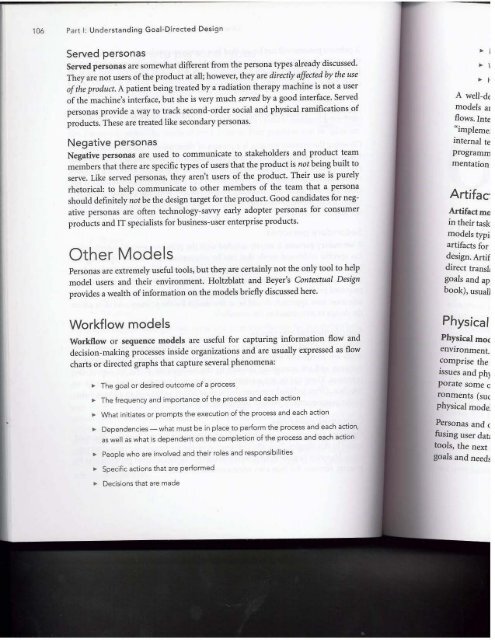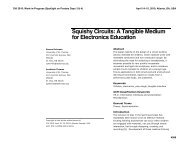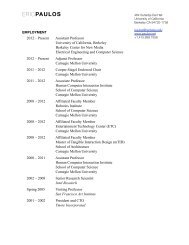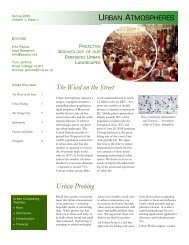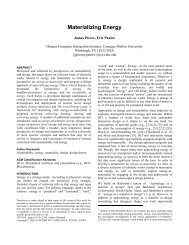Chapter 5: Modeling Users: Personas and Goals
Chapter 5: Modeling Users: Personas and Goals
Chapter 5: Modeling Users: Personas and Goals
You also want an ePaper? Increase the reach of your titles
YUMPU automatically turns print PDFs into web optimized ePapers that Google loves.
106 Part I: Underst<strong>and</strong>ing Goal-Directed Design<br />
Served personas<br />
Served personas are somewhat different from the persona types already discussed.<br />
They are not users ofthe product at all; however, they are directly affected by the use<br />
ofthe product. A patient being treated by a radiation therapy machine is not a user<br />
of the machine's interface, but she is very much served by a good interface. Served<br />
personas provide a way to track second-order social <strong>and</strong> physical ramifications of<br />
products. These are treated like secondary personas.<br />
Negative personas<br />
Negative personas are used to communicate to stakeholders <strong>and</strong> product team<br />
members that there are specific types of users that the product is not being built to<br />
serve. Like served personas, they aren't users of the product. Their use is purely<br />
rhetorical: to help communicate to other members of the team that a persona<br />
should definitely not be the design target for the product. Good c<strong>and</strong>idates for negative<br />
personas are often technology-savvy early adopter personas for consumer<br />
products <strong>and</strong> IT specialists for business-user enterprise products.<br />
Other Models<br />
<strong>Personas</strong> are extremely useful tools, but they are certainly not the only tool to help<br />
model users <strong>and</strong> their environment. Holtzblatt <strong>and</strong> Beyer's Contextual Design<br />
provides a wealth of information on the models briefly discussed here.<br />
Workflow models<br />
Workflow or sequence models are useful for capturing information flow <strong>and</strong><br />
decision-making processes inside organizations <strong>and</strong> are usually expressed as flow<br />
charts or directed graphs that capture several phenomena:<br />
.. The goal or desired outcome of a process<br />
.. The frequency <strong>and</strong> importance of the process <strong>and</strong> each action<br />
.. What initiates or prompts the execution of the process <strong>and</strong> each action<br />
.. Dependencies - what must be in place to perform the process <strong>and</strong> each action,<br />
as well as what is dependent on the completion of the process <strong>and</strong> each action<br />
.. People who are involved <strong>and</strong> their roles <strong>and</strong> responsibilities<br />
.. Specific actions that are performed<br />
• I<br />
·\<br />
• f<br />
A well-d{<br />
models al<br />
flows.lnte<br />
"implemej<br />
internal te<br />
programm<br />
mentation<br />
Artifac<br />
Artifact m(]<br />
in their task<br />
models typi,<br />
artifacts for<br />
design. Artif<br />
direct transl.<br />
goals <strong>and</strong> ap<br />
book), usuall<br />
Physical<br />
Physical mo(<br />
environment.<br />
comprise the<br />
ISSues <strong>and</strong> ph)<br />
pOTate some c<br />
mnments (sue<br />
physical mode:<br />
<strong>Personas</strong> <strong>and</strong> (<br />
fusing user dat,<br />
tools, the next<br />
goals <strong>and</strong> needs<br />
.. Decisions that are made


